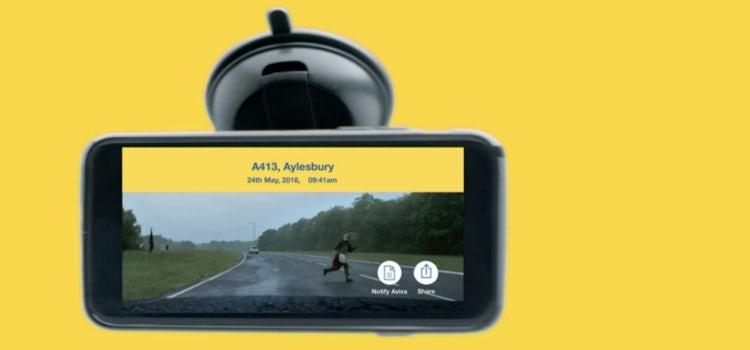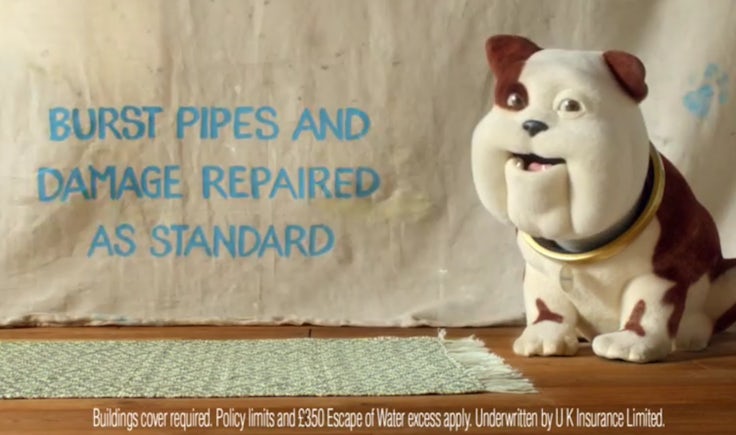How Aviva’s ‘Digital Garage’ is helping the insurance brand disrupt itself
Aviva wants to “permanently change” insurance by using data and technology to address customers’ biggest pain points and using its marketing to move the conversation away from price.
Aviva is hoping to transform the insurance industry by using data and technology to address customers’ biggest pain points and using its marketing to move the conversation away from price and towards service, the level of cover and the claims process.
To do that, Aviva opened a ‘Digital Garage’ in Shoreditch in East London two years ago. It now holds a few hundred staff and is home to its digital innovation and development teams, which house staff including data scientists and people who used to work as games developers. The idea is to get people that haven’t worked in the insurance industry to think about how the sector can be improved to offer better service to customers.
“We know that as a business we can bring massive value to customers,” says Aviva’s retail and brand marketing director Tom Daniell. “We know we can make a massive change for customers if we can face up to a whole load of the behaviours that we ourselves have generated [in how they buy and use insurance policies], but also the perceptions around all these products.”
Broadly, there are two things the Garage aims to do. First is to understand the customer, and Aviva has invested what Daniell calls a “decent amount” into recruiting customer analytics people and building a function called ‘Aviva Quantum’. Its job is to understand customers, not just on price but on their behaviours, the pain points in the industry and the opportunities.
The second part is around building capability and functionality to deliver on those pain points and opportunities, using data and technology.
Daniell is keen to point out that the Garage is not an innovation hub but a business function with a P&L and accountability for trading, sales and retaining customers. Aviva also runs its retail business from the Garage, while the division is also responsible for brand and how the company talks to customers.
“[The Garage] is actually where we run the business from,” he explains. “It is a tangibly different approach to what you will see in many other businesses, where the ‘garage’ is an innovation hub and it sits on the side and you tell them, ‘whatever you do don’t hurt my main business but go play with the new shiny stuff over there’, and then you cross your fingers and hope something interesting comes out. What we’ve done here is give it teeth.”
Addressing the insurance industry’s pain points
One of the first products the Garage launched was MyAviva, a dashboard that lets customers see all their policies in one online hub. It also has a service, called Ask Me Never, that gives customers automated and pre-approved quotes without them having to answer a series of questions they are unlikely to know the answer to (think what year their house was built or if their home is on a flood plain).
We know we can make a massive change for customers if we can face into a whole load of the behaviours that we ourselves have generated, but also the perceptions around all these products.
Tom Daniell, Aviva
The latest product is a dashcam offering, available in the Aviva app, that customers can use to record as they drive. If they are involved in an accident, footage can be sent in as part of their claim. And later in the year, Aviva will also look at the issue of price hiking, with the belief that addressing the issue can boost retention and reduce churn.
“We’ve got a whole load of things in the pipeline where we recognise that there are things that may have been the status quo for many years but that from an outsider’s perspective are unacceptable to maintain,” explains Daniell.
Launching these services has required a lot of work behind the scenes, with Aviva having to update legacy system and rethink its business model. Daniell admits it has at times been “difficult” because it is not only launching new products and services but in some cases looking to shake up Aviva’s business model. But he believes the changes are necessary if Aviva is to position for the future and avoid being disrupted by a startup.
“Any time you are coming in with a brief to evolve the business dramatically you represent change for everyone and no one particularly likes change – it is not an easy thing to go through,” he explains.
“The idea you can remodel something that has been a very successful model for many year, but you are remodelling it because you believe it’s unsustainable on behalf of the customer, is a really difficult one.”
Shaking up the insurance industry’s formulaic advertising
While work on transforming the Aviva business has been going on for a number of years, it is only now that the company is starting to really talk about it to consumers. The first sign of that was in a marketing campaign the company launched earlier this year that featured a man being interrogated about the type of front door on his house.
Created by its creative agency adam&eveDDB, it aims to shake-up insurance advertising, which Daniell believes has become formulaic – focused on product and price rather than service and quality. A new ad, launching this week, promotes the dashcam app.

“The campaign is representative of the business we are. It’s clean, there’s no puppets or dancing men in stilettos, it’s not trying to be distracting. It’s saying we recognise customers, we put a lot of effort into understanding customers and we will solve the problems we have helped create; we are not going to hide behind gimmicks,” he says.
While the initial ad only launched a few months ago, Daniell says the business is already seeing benefits, with the campaign performing better than any other from the past four years. Brand equity measures such as recall and consideration have increased, he claims, while it is also driving trade.
“Even though it’s a brand new campaign with a brand new look and feel, and you would expect it to take while to warm up, it’s actually working better [than Aviva’s previous campaign] even though it defies the formula of insurance advertising, which is having an image of the product you are selling and then talking about price,” he explains.
“This doesn’t talk about that, it just represents us understanding the customer and solving their problem, that’s all it is. Nice and simple.”
Standing out from the rest of the industry is key, with Daniell pointing out that the price comparison sites are the biggest spenders and their focus is on “conditioning customers not to trust insurers and to permanently shop around and look just at price”.
“What we’re trying to do is show it is so much more than price. It’s about service, the level of cover you get, the claims process. Direct Line are great [at moving beyond that], but other than that everyone jumps on the bandwagon of price. We want to get away from that,” he says.
“This is a really big show of the business we are becoming and we invested in over the last few years. And this is the start of a new campaign that really is all about customer understanding, what we’re doing about solving customer pain points and creating new opportunities for customers.”







